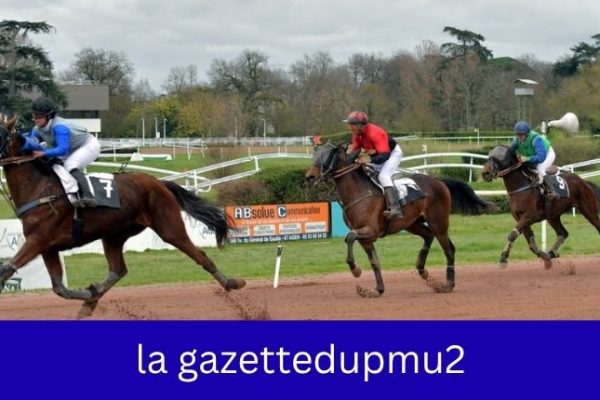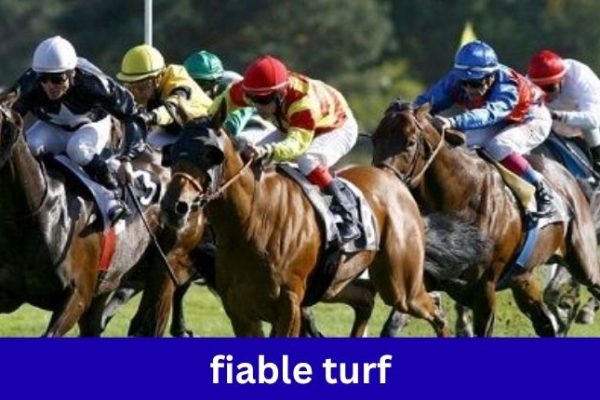Often described as a multifaceted enterprise, it combines lifestyle, ardour, and massive economic activity. In many nations, horse racing isn’t always just a game but a cultural and social phenomenon wherein the La filière turf forms the spine of the equestrian world. Understanding this zone calls for exploring its structure, contributors, and monetary importance, in addition to the challenges it faces in the modern era.
The Structure of Filière Turf
At its centre, La filière turf is prepared around three important pillars: breeding, education, and racing. Breeding is crucial for producing aggressive horses. Specialised farms are aware of generating thoroughbreds with ideal developments, consisting of speed, persistence, and temperament. This level of the filière turf demands knowledge, funding, and careful selection of bloodlines to make sure of the best of the horses.
Training bureaucracy is the next crucial step. Trainers and stables work to develop the physical and mental abilities of horses, making them ready for competition. This procedure is exceedingly specialised, requiring know-how of exercise workouts, vitamins, and care. Jockeys play a fundamental function, forming a partnership with horses to optimise performance. The synergy between trainers, jockeys, and horses is essential for success in races.
Racing is the maximum visible element of the La filière turf. From nearby tracks to internationally famous events, races bring together proprietors, trainers, jockeys, and bettors. Races range in distance, floor, and category, each offering precise and demanding situations for individuals. These competitions not only entertain audiences but also function as a degree of breeding and schooling, pleasantly.
Economic Significance of La Filière Turf
The La filière turf is a first-rate economic contributor in areas where horse racing is famous. It generates sales through breeding, income from horses, race access prices, making a bet, sponsorships, and media rights. Thoroughbred auctions are a high instance of the economic effect, with pinnacle horses promoting for tens of millions of dollars. Employment possibilities also extend beyond the song, which includes a stable workforce, veterinarians, transporters, and hospitality carriers.
Betting is a fundamental monetary component. Turf betting presents enormous profits to racing organisations and contributes to the wider gambling industry. Regulatory frameworks are regularly in place to ensure fairness and integrity, maintaining public trust in the betting method. Revenue from wagers frequently helps prize cash, breeding applications, and infrastructure improvement, reinforcing the cycle of monetary interest within the La filière turf.
Cultural and Social Importance: La filière turf
Beyond its monetary contribution, La filière turf holds cultural significance. Horse racing activities regularly function as social gatherings, drawing various audiences from diverse backgrounds. They provide possibilities for socialising, fashion, and subculture, with occasions inclusive of the Prix de l’Arc de Triomphe in France or the Kentucky Derby within the United States becoming iconic cultural furniture.
In addition, the filière turf fosters a feel of heritage. Knowledge and practices associated with breeding, training, and racing are regularly passed down through generations. This continuity continues the traditions of horsemanship even as it adapts to trendy technology and improvements in veterinary care, schooling strategies, and race control.
Challenges Facing Filière Turf
Despite its longstanding records, the La filière turf faces numerous challenges. Economic pressures, opposition from different sports, and shifts in public hobbies require adaptation and innovation. Rising costs in breeding and education can restrict entry into the industry, whilst the welfare of horses and ethical concerns are increasingly having an effect on public perception. Regulations and strict standards aim to ensure the safety and well-being of horses, but balancing the way of life with modern moral expectations is an ongoing challenge.
Globalisation also affects the Los Angeles La filière turf. International competitions and the export of horses create opportunities and opposition for nearby stakeholders. Adapting to international standards, knowing global markets, and attracting investment are crucial for preserving competitiveness. Technology, from overall performance analytics to veterinary diagnostics, plays a key role in addressing these challenges and enhancing the efficiency of operations inside the filière turf.
The Role of Innovation
Innovation is turning into a driving force within the La filière turf. Data analytics, wearable technology, and superior veterinary care allow trainers to monitor horses’ overall performance and fitness more accurately than ever before. Breeding practices benefit from clinical improvements, which include genetic analysis and reproductive technology. Such improvements enhance competitiveness while ensuring horse welfare, a critical thing for maintaining public belief and long-term success.
Digital structures and online betting have also transformed the economic landscape. By supplying wider access to making a bet markets and race data, those technologies increase the audience and provide extra revenue streams. Social media and virtual marketing enhance visibility, allowing proprietors, trainers, and racing companies to hook up with lovers globally.
Future Prospects
The destiny of La filière turf will, in all likelihood, involve a stability of subculture and modernisation. Continued investment in breeding, schooling, and racing infrastructure is important. Ethical considerations, technological adoption, and international integration will form the evolution of the industry. Stakeholders who embrace innovation while retaining the cultural essence of horse racing will thrive.
Efforts to engage more youthful audiences, sell horse welfare, and expand sustainable practices are predicted to outline the next section of the filière turf. Collaboration amongst regulatory bodies, racing institutions, and technology carriers will, in addition, enhance the enterprise. By doing so, L.A. Filière turf can stay a vibrant and influential zone inside the global sports and entertainment landscape.
Conclusion
La filière turf is greater than just horse racing; it’s a dynamic industry with monetary, cultural, and social dimensions. From breeding farms to racecourses, the interconnected community of specialists and fanatics sustains a way of life that has evolved over centuries. While facing challenges from ethical worries, financial pressures, and changing public habits, the enterprise continues to adapt through innovation and globalisation. Understanding the intricacies of L.A. Filière turf affords insight into a global world where passion, ability, and approach converge to create an enduring, wearing legacy.






